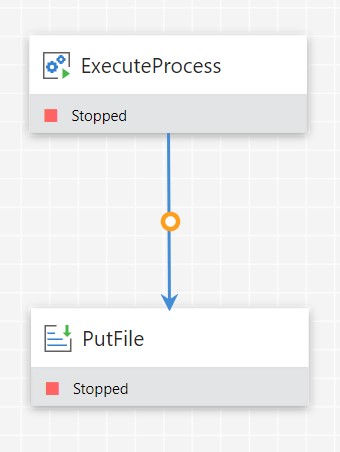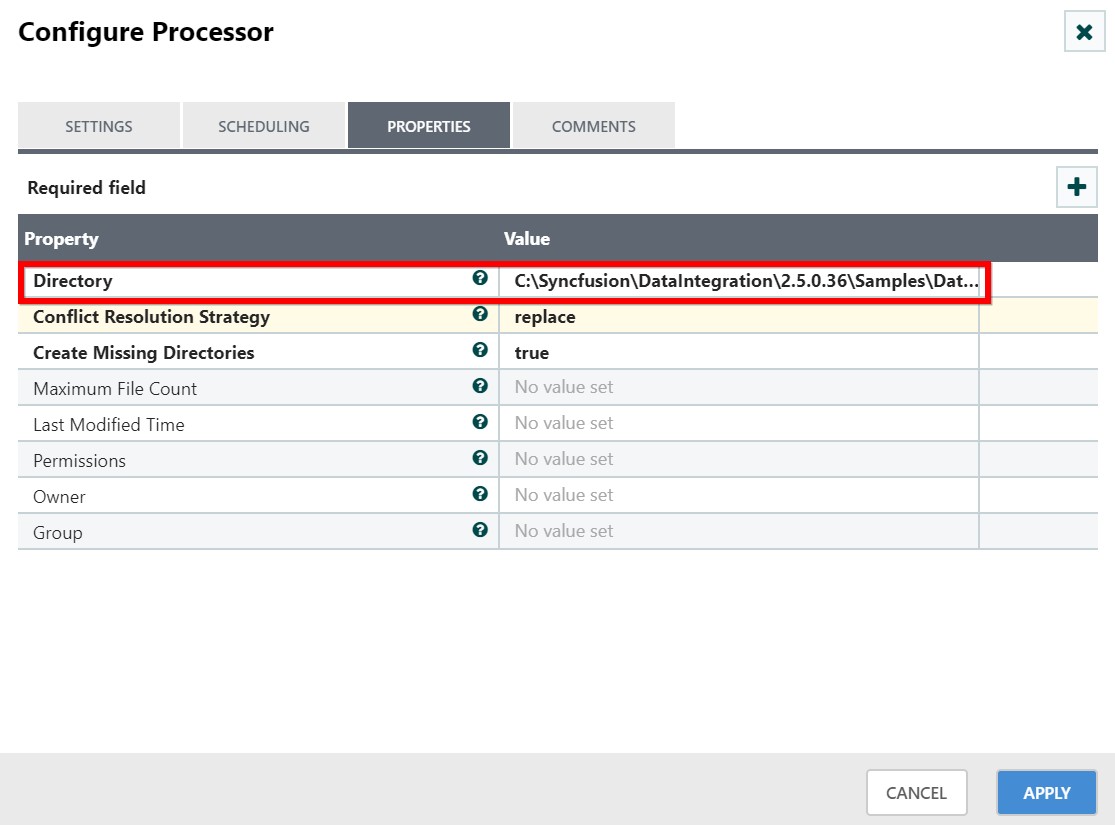Description and usage of ExecuteProcess:
Runs an operating system command specified by the user and writes the output of that command to a FlowFile. If the command is expected to be long-running, the Processor can output the partial data on a specified interval. When this option is used, the output is expected to be in textual format, as it typically does not make sense to split binary data on arbitrary time-based intervals.
Tags:
command, process, source, external, invoke, script
Properties:
In the list below, the names of required properties appear in bold. Any other properties (not in bold) are considered optional. The table also indicates any default values.
| Name | Default Value | Allowable Values | Description |
| Command | Specifies the command to be executed; if just the name of an executable is provided, it must be in the user's environment PATH. | ||
| Command Arguments | The arguments to supply to the executable delimited by white space. White space can be escaped by enclosing it in double-quotes. | ||
| Batch Duration | If the process is expected to be long-running and produce textual output, a batch duration can be specified so that the output will be captured for this amount of time and a FlowFile will then be sent out with the results and a new FlowFile will be started, rather than waiting for the process to finish before sending out the results | ||
| Redirect Error Stream | false | * true</br> * false | If true will redirect any error stream output of the process to the output stream. This is particularly helpful for processes which write extensively to the error stream or for troubleshooting. |
| Argument Delimiter | Delimiter to use to separate arguments for a command [default: space]. Must be a single character. |
Dynamic Properties:
Dynamic Properties allow the user to specify both the name and value of a property.
| Name | Value | Description |
| An environment variable name | An environment variable value | These environment variables are passed to the process spawned by this Processor |
Relationships:
| Name | Description |
| success | All created FlowFiles are routed to this relationship |
Reads Attributes:
None specified.
Writes Attributes:
None specified.
How to Configure?
This sample explains how to perform the addition of two numbers by passing the input as command-line arguments using the ExecuteProcess processor.
C# code for addition:
using System;
using System.Collections.Generic;
using System.Linq;
using System.Text;
using System.Threading.Tasks;
namespace addition
{
class Program
{
static void Main(string[] args)
{
int sum = 0;
int x = 0;
int y = 0;
x = Convert.ToInt32(args[0]);
y = Convert.ToInt32(args[1]);
sum = x + y;
Console.WriteLine("Sum of " + x + " and " + y + " is " + sum);
}
}
}
Create a workflow in the Data Integration Platform:
Overview:

Step 1: Execute the .exe file
Drag and drop the ExecuteProcess processor to execute the .exe file and specify the following properties.
Command: <Your exe filepath>
Command Arguments: <input to be passed as arguments>
Argument Delimiter: Default value is <space>

Step 2: Store the response in a file
Drag and drop the PutFile processor and specify the file location as below to store the incoming flow file content (output of addition of two numbers).

Output:
After starting the processors, the result will be stored in the specified location as follows.
